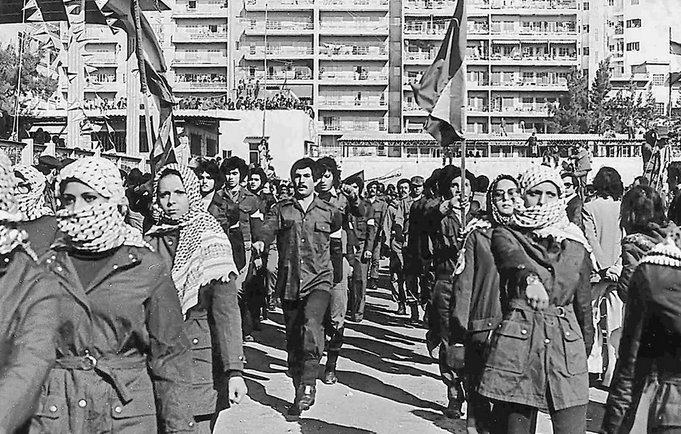
Today marks the 24th anniversary of the liberation of 144 prisoners from the colonial Khiam prison camp and torture center just days before the zionist occupation was driven out of southern Lebanon.
The prison was run by colonists and their allies since its inception. In the 1930s, it held rebels against the French occupation, and in 1985, invading zionists and the SLA turned it into a brutal torture facility.
In October 1991, 210 detainees were known to be held in Khiam, of whom 20 were non-Lebanese. This group included 13 Palestinians, four Syrians, two Kurds, and one Algerian. Among the detainees, there were 16 women (15 Lebanese and one Palestinian). Reports indicate that detainees ranged from minors to individuals in their sixties and older.
One of the youngest detainees, Rabah Shahrur, was around 12 years old when he was captured, held in Khiam for eight months to pressure his detained older brother into confessing. Another child, Ahmad Nimr Munther from Markaba, was 14 when he was taken prisoner in 1989. It was common to torture the relatives of the prisoners, their parents, and loved ones to force them to “confess” that they were resisting occupation.
Over the years, over 5,000 people, including 500 women like revolutionary Lebanese resister Suha Bechara (media 4, part 1), would be imprisoned and tortured at Khiam by electrocution, beating, waterboarding, and other brutal methods.
11 martyrs (media 2, part 2) ascended inside the prison due to torture, medical negligence, or suffocation by gas. The Khiam prison remained a testament to the struggle of a people until the 2006 war. The IOF, in an attempt to erase their crimes, bombarded the torture center, reducing it to ruins (media 3,4 part 2). Despite all their attempts, the electrical pole where they tortured the prisoners and two of them were martyred, as well as a cell used for torture, remained (media 5,6,7 part 2). The memories of the freed resisters, children of the land, remained. The voice of Rani Bazzi, who screamed on May 23, 2000, when he was liberated and continued to resist until he was martyred in 2006, in the same war where the enemy attempted to erase his past, still lingers on top of the rubble (media 8, part 2). We bear witness.
Every victory that is not documented may be lost. The scenes of liberation at Khiam prison not only document the victory but also make us feel as if we are living it, moment by moment, breaking into the torture prison where the occupiers fled, to free our prisoners (media 1, part 2). It makes us long for this moment in Palestine.
Last year, RNN wrote: “Khiam reminds us that #FreeThemAll is not a lofty dream or an empty promise to be replaced with compromise. The freedom of all prisoners—from the colonial prisons of the zionist entity, the dungeons of the comprador Authority, and the prisons of Europe, America, and the Arab world—is a reality that will be enforced through armed resistance and popular revolt.”
On October 7th, the resistance enforced that reality through armed resistance, backed by the popular cradle, with their first demand being our prisoners, reiterating: “If the prisoner is lost, the nation is lost.” 210 prisoners have been freed in the November exchange batches. We await the moment where all of our prisoners shall be free.
Khiam teaches us that the liberation of our prisoners is inevitable. It is a promise, because our people and their resistance pledged to keep it. As the liberation of the prisoners in southern Lebanon on the 23rd of May 2000 announced the liberation of the land two days later, today we affirm that the freedom of our prisoners has begun, announcing: the liberation of Palestine from the river to the sea, has begun.